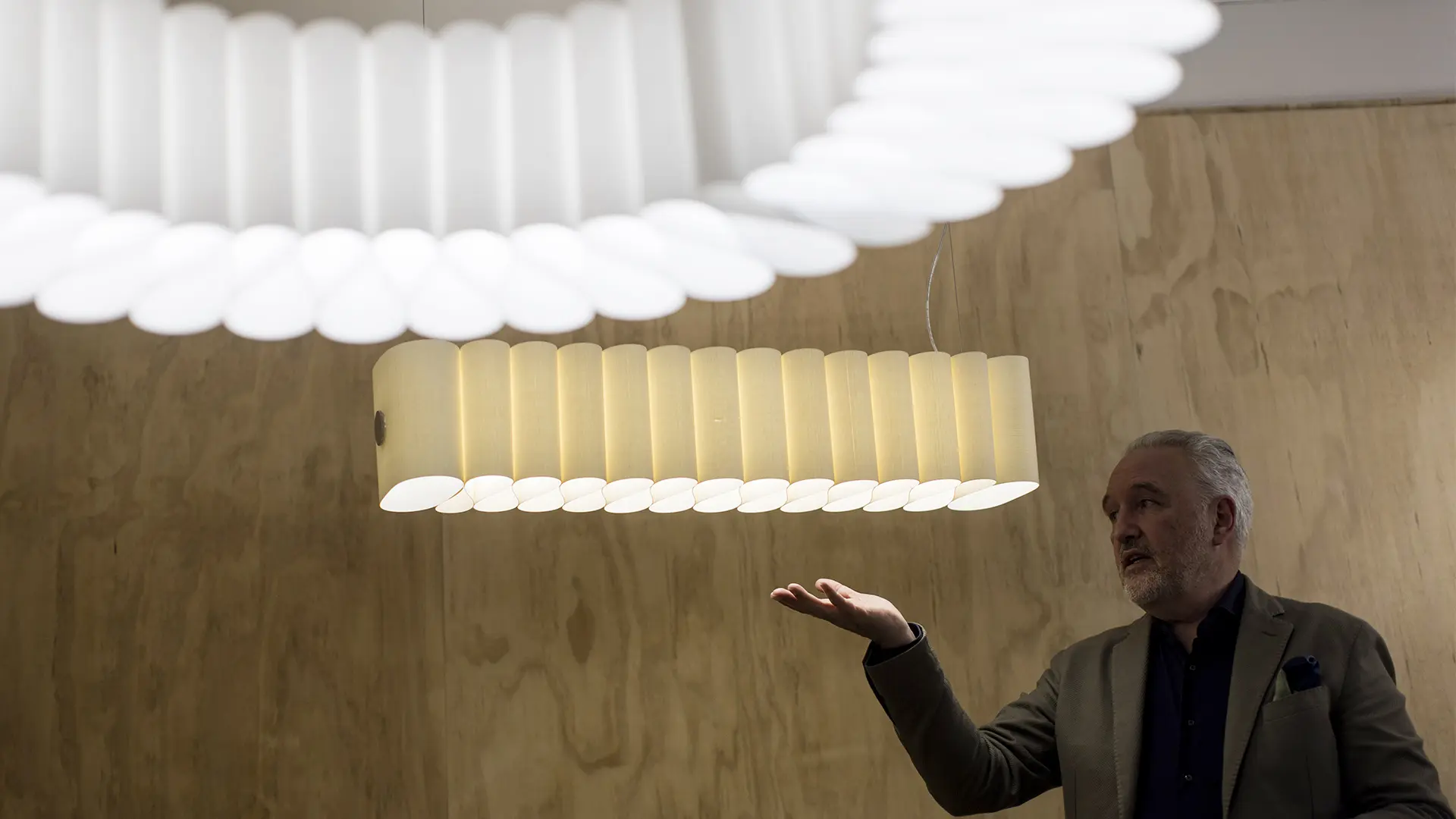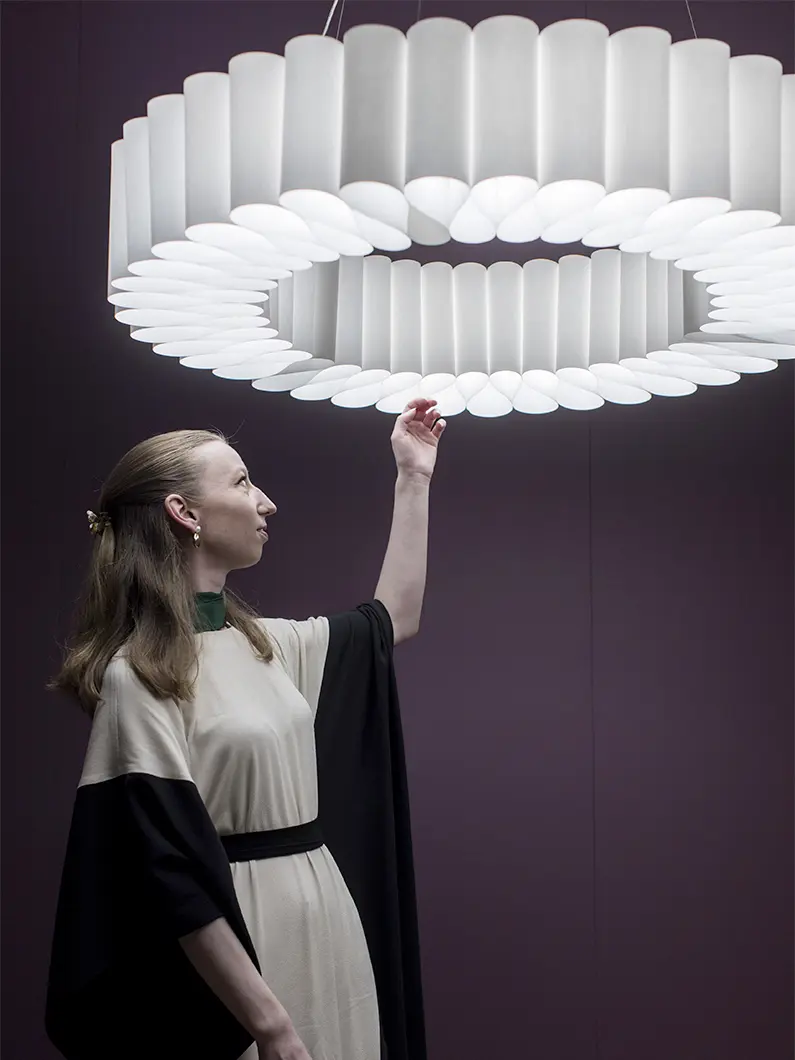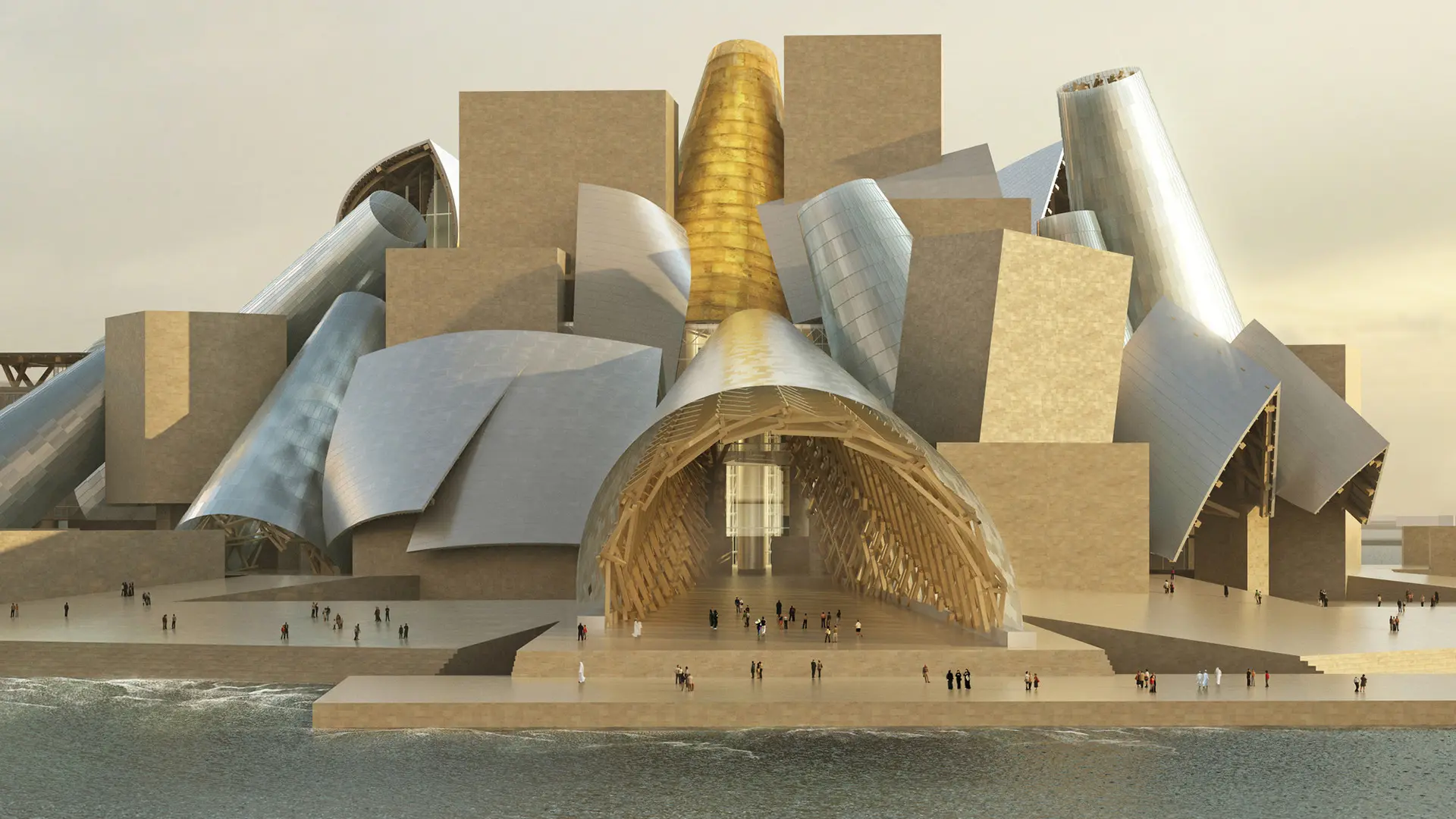From BIG to David Chipperfield, Frank Gehry to Snøhetta: a world tour of the best buildings set to open in 2026
Felicia Arvid and Foscarini: design freedom meets evocative power

PLI, Foscarini, design Felicia Arvid
Making her debut in the lighting world, the Danish designer leverages Foscarini’s creative flair to turn two-dimensional materials into architectural objects
Scouting continues, as seen in the new collaborations identified at the 2023 Salone del Mobile.Milano.
It was the funky clothes she made for herself that captivated some of the buyers visiting the fashion house where she was doing an internship. It was from there, from the sartorial world that, having added a degree in architecture to her studies in fashion design, the young Felicia Arvid (born in 1994, and a multiple award-winner - not least a 2022 Compasso d’Oro for her design for Caimi Brevetti’s Klipper acoustic panel, presented at SaloneSatellite) branched out into industrial design, with her original creative DNA intact. In the Pli pendant lamp, the materials take on the semblance of drapery to become markedly decorative, powerfully evocative load-bearing structures. Pli consists of an 88cm strip of plissé paper – hence its name – the version in wood is 1m in diameter – with large, soft folds that capture the light, like a needle through fabric. A tube containing an LED strip passes through the entire length of the product, as if stitching the thin strip of material, bringing form, function and construction together and conferring an astonishing simplicity. Just like all Foscarini products, with their light, poetic shapes, essential and charismatic, in constant dialogue between concept and form.
We fired three quick questions at Felicia Arvid and Carlo Urbinati, President and founder of Foscarini and President of Assoluce.
Felicia Arvid: This phrase relates to seating and how e.g. a chair presents the person (similar to a piece of clothing). I like to imagine the furniture in use and to explore how it embrace the body; what it reveals or conceals – how it in fact frames the person sitting in it. I wish to create a visual dialogue between the human, the furniture and the surrounding space. In relation to lighting, I like to think a lamp dresses the room as it constitutes the spatial experience.
FA: My background in dressmaking gives me a tactile approach to product design. This creates a naturally close relationship between the material and its constructional properties. The experience from sewing and pattern making gives me a knowledge of how to construct three-dimensional shapes from a flat piece of material. I like to explore the properties of a material in order to be able to exploit these properties when forming a new design. Experimenting with the material in the design process can sometimes elicit the unexpected.
My work is based on the Nordic tradition which relies on honesty and simplicity. Honesty in relation to materials and simplicity in relation to construction and visual composition. It has informed my approach to product design where I always strive to reach a synthesis between form, material, construction and of course function.
FA: I was introduced to Carlo Urbinati by our mutual friend Giorgio Caimi and I am very happy about how this introduction evolved into a collaboration. In my preliminary conversations with Foscarini, I found we shared similar design values which is key for a successful collaboration. Light is a fascinating element, without light there is no shadow and without shadow you cannot perceive form and I have always thought designing a lamp would present a most intriguing challenge. The focus is on Pli at the moment but now that I have made my debut in the world of lighting I will continue to explore this field. There is still a lot of ways to capture and interpret the subtle element of light, yet to be discovered.
Carlo Urbinati: The SaloneSatellite did play an indirect part in our collaboration with Felicia Arvid. It was our friend Giorgio Caimi, of Caimi Brevetti, who told us about her, after noticing her at the Satellite, while they were working together on the project for the Klipper acoustic panel, which went on to win the prestigious ADI Compasso d’Oro award.
What fascinates us about Felicia is her very personal design aesthetic, which focuses on the material imagined as a synthesis between function, structure and form, aiming at a minimalism that does not reject decorum but rather enhances it. This stimulated us to propose that she work with us on a conceptually new lamp. It was a challenge for her, since she had never worked with light, and we know how different designing lamps is from designing other furnishing accessories. The Pli pendant lamp marked her debut in the world of lighting.
CU: Foscarini is a company that thrives on ideas, curiosity and the urge to test ourselves and experiment. Designing, in my opinion, means making sense of things. Design is what goes beyond function. If I have to illuminate a room, I can take a light bulb and get the result. What we do is add meaning, charm and sense to a function. This approach guides us not only in the development of our collections, but pervades every aspect of our company. Projects such as “Inventario”, “What’s in a lamp?” and “Vite”, although differing from each other, share a common basis: they offer space for creativity, gather inspiration, encourage the exchange of knowledge, enhance diversity and the richness that arises from it.
Inventario, for example, is a real treasure trove of ideas and inspirations. A different kind of editorial project, which we imagined and created with Beppe Finessi in 2010. We’ve been promoting and supporting it with conviction ever since. I always enjoy picking up even the back numbers, leafing through them and finding new ideas. Inventario connects projects, works, objects and authors, inviting us to observe reality with a lively curiosity.
The VITE project, on the other hand, represents the desire to observe our lamps from another point of view, describing them “in action”, in people’s real lives, removing them from the pedestal of perfection on which designer objects are often presented in our world.
The project “What’s in a lamp” – a feature of our Instagram channel this year – is another way of giving a voice to creativity and expressive freedom. We present original content created by different visual artists, and we ask them to interpret our lamps, always seeking to discover the power of ideas.
CU: I don’t know whether we can talk about the things we have changed, but we can say that we’ve “added” some original visions to the world of light.
The products we decide to include in our catalogue are like a family photograph that has the task of representing the brand’s essence. For this reason, the choice of a new lamp places a great responsibility on us, because it will become a new item that represents the image and positioning of the brand. I like to think that we work so that we can say that if Foscarini didn’t exist, neither would that lamp. Because it takes great freedom and a certain degree of detachment from material things to push concepts to the limit and present them on the market, even when they risk not being easily understood. We have included in the catalogue pieces that interested us in terms of design and personality, but that we knew from the start would not be clearly understood by the market. And sometimes we’ve been surprised: the market was more open and interested than we’d expected.

A Matter of Salone: the new Salone communication campaign
From a reflection on humans to matter as meaning: the new Salone communication campaign explores the physical and symbolic origins of design, a visual narration made up of different perspectives, united by a common idea of transformation and genesis


Salone 2025 Report: The Numbers of a Global Event
Data, analyses, and economic, urban, and cultural impacts. The second edition of Salone del Mobile’s “Milan Design (Eco) System” Annual Report takes stock of a unique event and consolidates the fair’s role as the driving force behind Milan as the international capital of design



 Stories
Stories










